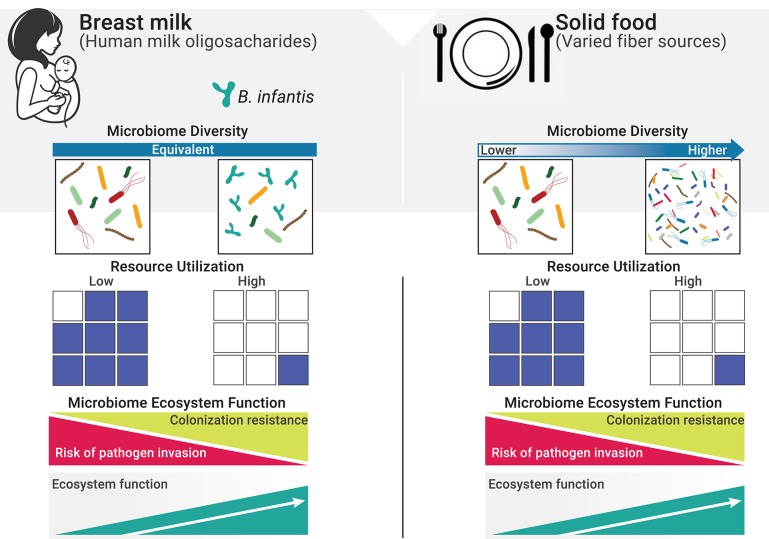Figure 1.
Resource utilization and diversity in the gut in determining invasion resistance. The resource landscape in the human gut is vastly influenced by diet. One fundamental function of the microbiome is to keep potential pathogens at bay by direct competition for space and resources (i.e., co-lonization resistance, a regulating service). Excess resources (blue squares) represent open niche opportunities and increase the risk of colonization by invasive species, including pathogens. When resources are efficiently utilized, the risk of successful invasion is greatly reduced due to the lack of available resources to sustain growth (28). On a solid food diet, a more diverse composite of species is required to deplete the greater variety of resources reaching the gut (29). However, in early life, and while diet is restricted to mother's milk, resource utilization is independent from diversity and will only reach maximum levels when specialized species able to efficiently consume HMOs are present.

